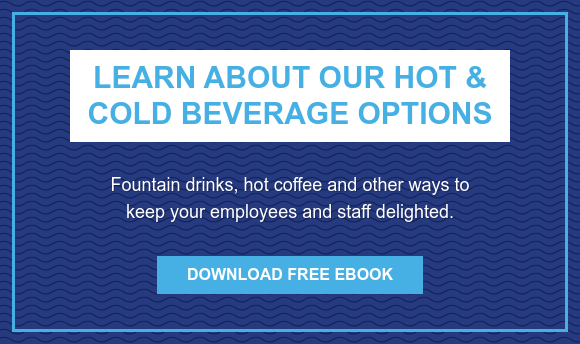For the first time in history, water has surpassed soda in the bottled beverage category. Total bottled water volume rose about 9 percent to 12.8 billion gallons in 2016, compared with a year earlier. Why the overtake of the soda giant? You can thank sparkling water for helping put up those big numbers - here's what consumers love about the bubbles.
What is Sparkling Water?
Essentially, sparkling water (also called carbonated water and seltzer water) has had carbon dioxide dissolved into it. This process makes it fizzy, similar to a soda. The difference between the two being that sparkling water isn't mixed with various types of syrup for flavoring
Sparkling water is different from both water and juice. Unlike water, it's carbonated. Unlike juice, it doesn't carry extra sugar or calories, which makes it a great choice for consumers looking for healthy options. Another major difference between sparkling water and regular water is its mixing properties.
Due to its carbonation, sparkling water makes the ideal mix for a lot of different drinks – including alcohol and most spritzers. Mixing apple juice or orange juice with sparkling water can add a refreshing, flavorful twist and create an even more popular drink.
Benefits of Sparkling Water
Sparkling water offers several health benefits to those who tend to be more health conscious. First, it's a great way to add more water to your diet – particularly for those who are good at drinking regular water but desire something else to supplement their hydration habit. Secondly, as it contains low or no calories, sparkling water is an excellent (and delicious) beverage alternative.
Let's say you want to offer a juice option with your eggs and bacon at brunch. Instead of having a full glass of orange juice, you can cut your orange juice with sparkling water to create a spritzer – not only cutting the calories and sugar from your orange juice in half but giving guests a fun new beverage to enjoy. Enhanced water is also another category to consider offering your customers - think a sparkling water with a boost.
A Quick Rise in Popularity
Believe it or not, the first recorded use of carbonated drinking water – AKA sparkling water – dates back to 1767, in the form of mineral water. While
Sparkling water started to become more popular among the general population as more people started to add more water to their diets. While sparkling water has the fizz and the characteristic bite of a soda, it doesn't have the same amount of calories or sugars. As you'd expect with these beverage trends, the rise in sparkling water's popularity means new variations and different flavors are being created – giving customers even more options than before.
Sparkling Water Options
So what options should you be providing for your customers? Perrier and San Pellegrino are popular choices, and they are seen as two of the most popular premium brands of sparkling water. Of course, you'll also want to consider flavored sparkling water options, such as Klarbrunn Sparkling which is also home to Vita Ice. Finally, if you're simply looking for the most popular, please-all brand of sparkling water, consider Aquafina Sparkling, which has been the best-selling brand in the U.S. for over 30 years, and it's also the number one canned brand worldwide. And, did you know the bubbly super brand got its start at a small Wisconsin brewery? True story.
No matter what you choose, emerging markets dictate that you should consider adding sparkling water to your line up alongside your regular selection of sodas and beers.


